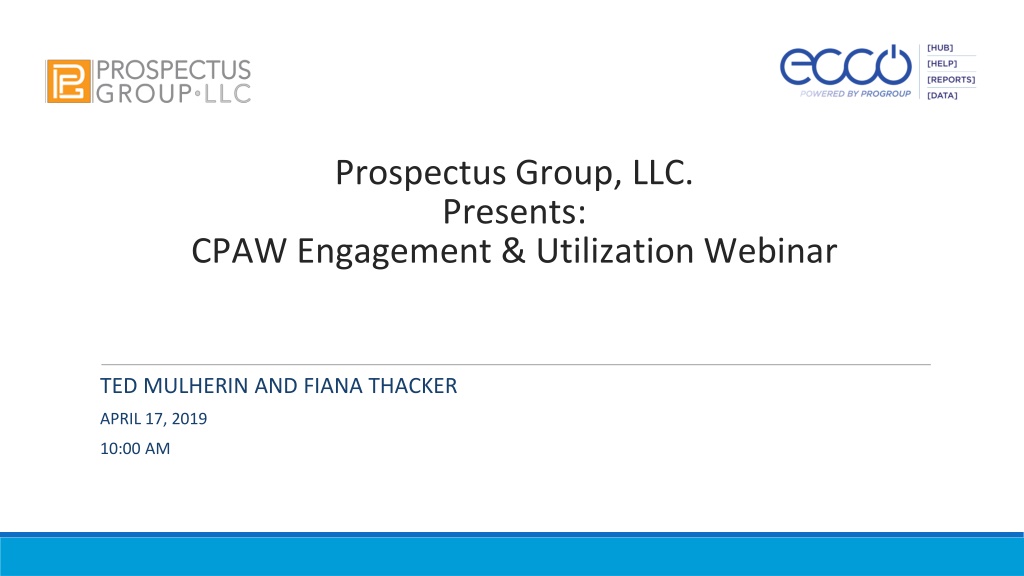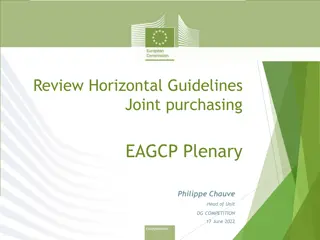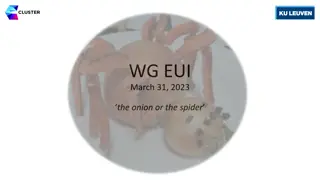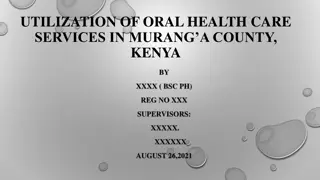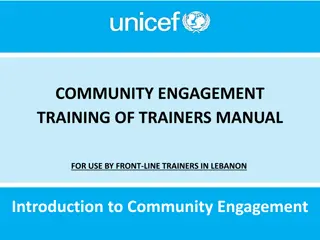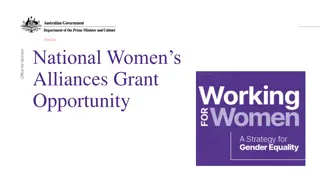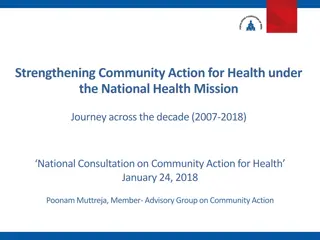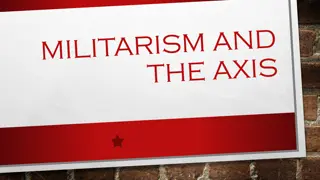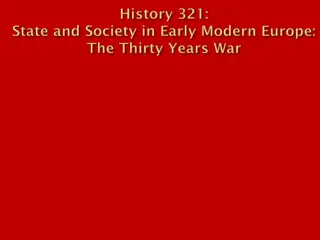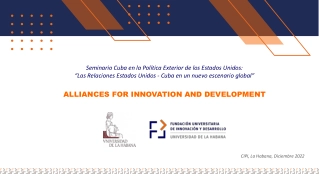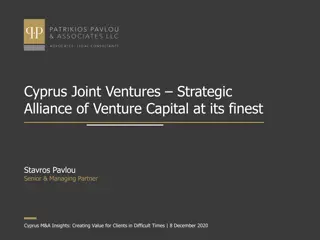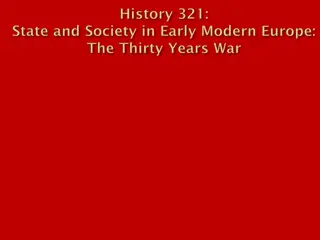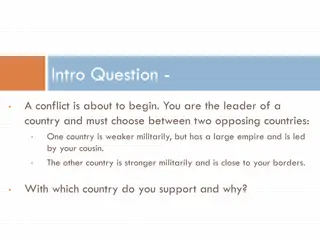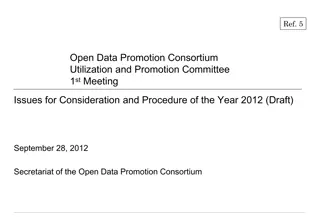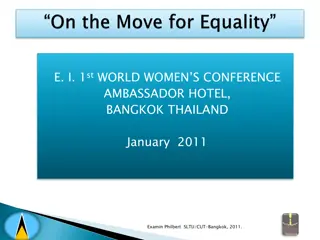Enhancing Engagement and Utilization of CPAW Members in Community Health Alliances
This webinar by Prospectus Group, LLC delves into the functions and effective utilization techniques of CPAW members, focusing on building local capacity for community prevention and health risk prevention. Discussions include consensus-building processes, fair decision-making, and consistent communication strategies to engage CPAW members effectively. Various technologies like GoToMeeting and Poll Everywhere are highlighted as tools used in the presentation.
Download Presentation

Please find below an Image/Link to download the presentation.
The content on the website is provided AS IS for your information and personal use only. It may not be sold, licensed, or shared on other websites without obtaining consent from the author. Download presentation by click this link. If you encounter any issues during the download, it is possible that the publisher has removed the file from their server.
E N D
Presentation Transcript
Prospectus Group, LLC. Presents: CPAW Engagement & Utilization Webinar TED MULHERIN AND FIANA THACKER APRIL 17, 2019 10:00 AM
Contacts Marcus Bouligny Morgan Crafts Director of Applied Systems Program Assistant mbouligny@progroup.us morgan@progroup.us 415.516.1332 770.298.9768 Ted Mulherin Fiana Thacker Health Communications Specialist Training & Outreach Coordinator ted@progroup.us fiana@progroup.us 912.678.5405 678.362.2424
Technology Used in This Presentation GoToMeeting GoToMeeting Poll Everywhere Poll Everywhere
Content and Outcomes o Understand functions of the CPAW o Tools to engage CPAW members o Effective utilization techniques of CPAW members
Functions of the CPAW Community members focus on individual assignments Data, program & operations and evaluation & sustainability Main Function: Build capacity at the local level Community Prevention Prevention of community health risk(s) as common goal Alliance among community stakeholders and agency to achieve this goal(s) Alliance Workgroup brings collective individual strengths to determine allocation of tasks/assignments Workgroups
Engaging CPAW Members Fairness in consensus-building process Establishment of engagement and change climate Facilitation of congruence between types of decisions and decision-making processes1 1. Hearld, L. R., Alexander, J. A., Bodenschatz, L., Louis, C. J., & O Hora, J. (2013). Decision-Making Fairness and Consensus Building in Multisector Community Health Alliances: A Mixed-Methods Analysis. Nonprofit Management & Leadership, 24(2), 139.
Engaging CPAW Members Consistent Communication Meetings Weekly, Bi-weekly or monthly Group text applications GroupMe Voxer Wunderlist Zoom
Engaging CPAW Members Reward CPAW Successes Acknowledge credit for time and effort Clear Understanding of Purpose Communicate desire for members to be needed Meaningful use of time and involvement of members Education & Training Understanding of prevention processes
Engaging CPAW Members How to employ processes to facilitate perception of fairness and consensus building Build a formal framework for decision-making Build fairness early1 1. Hearld, L. R., Alexander, J. A., Bodenschatz, L., Louis, C. J., & O Hora, J. (2013). Decision-Making Fairness and Consensus Building in Multisector Community Health Alliances: A Mixed-Methods Analysis. Nonprofit Management & Leadership, 24(2), 139.
Resources Key methods for contacting and recruiting CPAW members (ranked in order of approximate effectiveness)2 1. Face-to-face meetings 2. Phone calls 3. Email 4. Personal letters 5. Mass mailings 6. PSAs or media ads 7. Flyers and posters 2. Murphy, F. (2013). Community Engagement, Organization, and Development for Public Health Practice. New York: Springer Publishing Company.
Effective Utilization of CPAW Members Challenges o Specifying appropriate governance structures and decision-making frameworks o Aligning stakeholder interests with the vision of the alliance3 3. Alexander, J. A., Christianson, J. B., Hearld, L. R., Hurley, R., & Scanlon, D. P. (2010). Challenges of capacity building in multisector community health alliances. Health Education & Behavior, 37(5), 645 664.
Effective Utilization of CPAW Members Challenges oBalancing short-term objectives with long-term goals oSecuring resources to sustain the effort without compromising it3 3. Alexander, J. A., Christianson, J. B., Hearld, L. R., Hurley, R., & Scanlon, D. P. (2010). Challenges of capacity building in multisector community health alliances. Health Education & Behavior, 37(5), 645 664.
Overcoming Alliance Utilization Challenges oAlliance Leadership oAlliance Decision-Making oAlliance Conflict Management These qualities in congruence with vision, mission and strategy agreement increase perceived value of the alliance.4 Alliance leadership Vision, mission, strategy agreement Alliance decision- making style Perceived value of the alliance Alliance conflict management 4. Hearld, L. R., & Alexander, J. A. (2014). Governance Processes and Change Within Organizational Participants of Multi-sectoral Community Health Care Alliances: The Mediating Role of Vision, Mission, Strategy Agreement and Perceived Alliance Value. American Journal of Community Psychology, 53(1/2), 185-197.
References 1. Hearld, L. R., Alexander, J. A., Bodenschatz, L., Louis, C. J., & O Hora, J. (2013). Decision-Making Fairness and Consensus Building in Multisector Community Health Alliances: A Mixed-Methods Analysis. Nonprofit Management & Leadership, 24(2), 139. Murphy, F. (2013). Community Engagement, Organization, and Development for Public Health Practice. New York: Springer Publishing Company. Alexander, J. A., Christianson, J. B., Hearld, L. R., Hurley, R., & Scanlon, D. P. (2010). Challenges of capacity building in multisector community health alliances. Health Education & Behavior, 37(5), 645 664. Hearld, L. R., & Alexander, J. A. (2014). Governance Processes and Change Within Organizational Participants of Multi-sectoral Community Health Care Alliances: The Mediating Role of Vision, Mission, Strategy Agreement and Perceived Alliance Value. American Journal of Community Psychology, 53(1/2), 185 197. 2. 3. 4.
